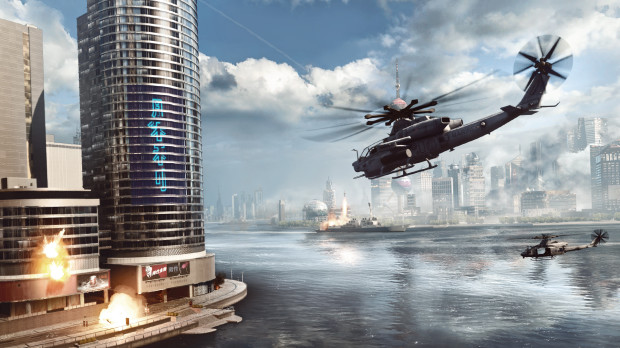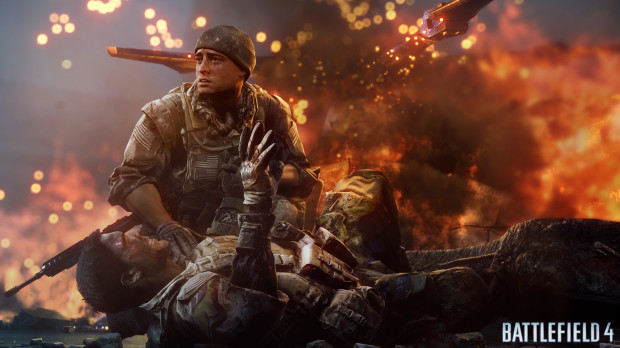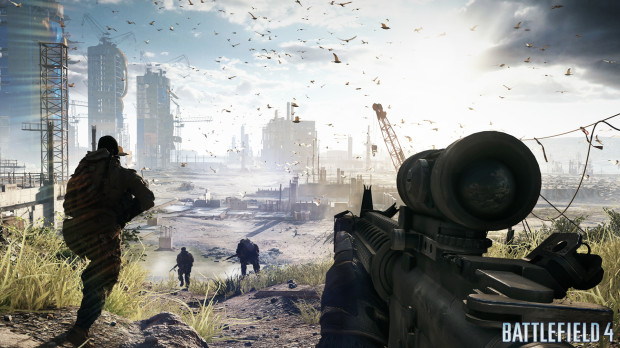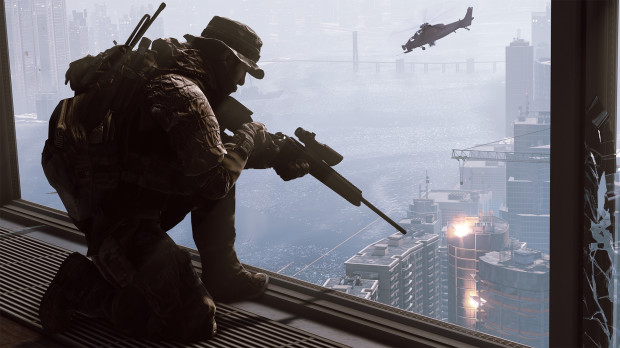Battlefield 4 Review (Next-Gen)
This game was reviewed on Xbox One.
Spanning multiple console and PC generations, the Battlefield series, created by Digital Illusions CE (or DICE for short), has been around for a very long time; the series’ original release was 2002’s Battlefield 1942. Since then, the series has evolved massively, and once again looks to cross another generational line with Battlefield 4, released on both Xbox 360 and Xbox One – the latter of which we’ll be looking at. Sporting not only several returning features from Battlefield 3, but throwbacks to other Battlefields past, Battlefield 4 may just set the standards not only for the series, but in all shooters. Can the new Frostbite engine deliver all the headshots, vehicles, and chaotic warfare to suit our violent needs, or will this push into the next-gen fail before it even begins?
While any Battlefield fan will surely jump straight into multiplayer, as it is the series’ staple, BF4 features a full campaign experience. Players take control of Sergeant Daniel Recker, de facto leader of U.S. Marine Corps’ Tombstone Squad. The Chinese Prime Minister Jin Jie has been assassinated, and Admiral Chang has convinced many of the Chinese citizens that America played a part in it. Making matters worse, Russia is supporting China in their cry for retaliation, leading the world to the brink of war! It’s in this chaos that Tombstone operates, fighting to prevent the outbreak of war. Along the way, they find out the truth about Jin Jie’s assassination, with loyalties and the chain of command being tested!
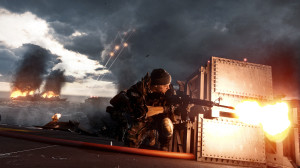 Unfortunately, players looking for a fantastic story-driven experience will be at a loss here. Although the campaign sounds full of intrigue and espionage, it’s basically a shoot-‘em-up fest around China. Veterans of Battlefield will recall BF3‘s tense, well-written framed narrative, and Bad Company 1&2′s over-the-top hilarity – all of which made for engaging story-telling. In BF4, however, there is not only minimal script, but a lack of back-story. Players will feel thrust into the middle of a story, even in the prologue, rather than having a scene set for them. Aside from the main characters in Tombstone Squad, there are very few characters, and most of the supporting cast appears very briefly or is killed off within minutes. Furthermore, the campaign is fairly short, giving you only about six to eight hours of play. While many collectables are present, and a point system allows for competition with friends, a large majority of gamers will simply plug through once before setting their sights on multiplayer.
Unfortunately, players looking for a fantastic story-driven experience will be at a loss here. Although the campaign sounds full of intrigue and espionage, it’s basically a shoot-‘em-up fest around China. Veterans of Battlefield will recall BF3‘s tense, well-written framed narrative, and Bad Company 1&2′s over-the-top hilarity – all of which made for engaging story-telling. In BF4, however, there is not only minimal script, but a lack of back-story. Players will feel thrust into the middle of a story, even in the prologue, rather than having a scene set for them. Aside from the main characters in Tombstone Squad, there are very few characters, and most of the supporting cast appears very briefly or is killed off within minutes. Furthermore, the campaign is fairly short, giving you only about six to eight hours of play. While many collectables are present, and a point system allows for competition with friends, a large majority of gamers will simply plug through once before setting their sights on multiplayer.
A plus for the story though is that you’re able to select what kind of weapon you’d like to use via weapons caches found frequently throughout levels, including but not limited to: SMGs, assault rifles, DMRs, long range sniper rifles, and shotguns. This feature is a nice touch, as many shooter campaigns give you a specific weapon to use per chapter. However, these tools are limited to pre-set attachments, so you cannot change the setup of your weapons – a big downfall for those looking to try specific setups before hopping into multiplayer. If you’re looking for something more than “go here and shoot this,” you’re going to be terribly disappointed. What the single-player experience will do for you, though, is get you used to the basic controls, and showcase the Frostbite 3 engine very well – which is a fantastic treat for your eyes (but more on the engine nitty-gritty later).
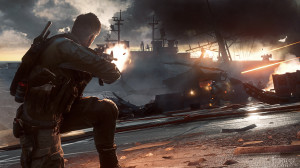 Chances are, if you’re buying BF4, you couldn’t care less about the story. Many players buy for the multiplayer – which does not disappoint! If you’ve played any game in the series before, you pretty much know what you’re in for: warfare on a large scale, and massively destructible maps. As with BF3, players can play as one of four classes (Assault, Recon, Support, and Engineer), who each have their own weapons, gadgets, and abilities. The base game has ten different maps, all of which are playable across the game’s seven game modes: Conquest, Rush, Obliteration, Domination, Team Deathmatch, Squad Deathmatch, and Defuse. Regardless which mode you choose, you’ll be creating those cinematic moments that are few and far between in first-person shooters.
Chances are, if you’re buying BF4, you couldn’t care less about the story. Many players buy for the multiplayer – which does not disappoint! If you’ve played any game in the series before, you pretty much know what you’re in for: warfare on a large scale, and massively destructible maps. As with BF3, players can play as one of four classes (Assault, Recon, Support, and Engineer), who each have their own weapons, gadgets, and abilities. The base game has ten different maps, all of which are playable across the game’s seven game modes: Conquest, Rush, Obliteration, Domination, Team Deathmatch, Squad Deathmatch, and Defuse. Regardless which mode you choose, you’ll be creating those cinematic moments that are few and far between in first-person shooters.
A few things are worthy of note before we get into the details of each class and game-mode. In BF4, there are three playable factions, America, China, and Russia, and which team you play as will be determined by the game mode and map – and each has its own styles and vehicles. For example, if you play as Russia, your squad commands and ambient speech tracks will be in Russian, giving you a very authentic atmosphere in combat. Although each side has their own vehicles, they’re very well balanced, and handle similarly. While this isn’t exactly realistic, it creates a very welcome setup of fairness. Gamers may also further divide their team into smaller chunks called Squads, which can now contain up to five members. There are several perks to doing so: most notably the ability to respawn on your squadmates’ current position. The leaders of these Squads can give directions to their squadron, showing key points to defend or attack – helpful for devising strategies.
As mentioned above, there are four classes, each bringing something special to the team. The Assault class are combat medics, sporting assault rifles, grenade launchers, and various healing supplies; they’re the only class that can revive fallen teammates. Support lays down the heavy fire, from mid-range with LMGs and in close quarters with shotguns. These players can also lay down ammo resupplies for their comrades-in-arms, and explosives like C4 and Claymore Mines. Engineers are the counter to vehicles, sporting player-eating SMGs and carbines, as well as anti-armour weapons like rocket launchers and landmines. Conversely, Engineers can also use the repair torch to fix damage done to friendly vehicles. Finally we have Recon, dealing in battlefield control and ranged combat. Don’t mistake this class for being mere snipers. Although they can reach out across the map with their sniper rifles (which can now be zeroed to various distances), they can also use mid-range semi-auto DMRs to pick off players. Their true skill, however, comes from their reconnaissance, as players can use various gadgets to reveal enemy locations on both the mini-map and your head-up display (HUD). By varying your squad to incorporate multiple classes, you’ll be able to dominate the battlefield. For example: having the Assault class heal a Support vanguard, while Recon spots out enemies and the Engineer repairs an escape vehicle, you can be much more effective and team oriented than those squads where everyone wanted to play with sniper rifles.
Flashy actions like killstreaks, destroying vehicles, and healing squadmates earn points for the player, which result in rank promotions as they hit certain point totals. However, these points don’t just go directly to your general level; they also go towards their various categories. For example, performing kills with sniper rifles will not only help progress your Recon class rank, but will also go into your sniper rifle rank to unlock new weapons – and into that individual rifle’s rank unlocking special attachments for that gun. It can be a bit confusing at first, but gamers will quickly get used to this system and will start tracking it with close attention.
Players have a massive array of personalization options before them, from weapon performance to general aesthetics. Each class’s starting weapon comes pre-customized with some helpful attachments, but every additional attachment needs to be unlocked first via the above-mentioned method of getting kills with it. Once unlocked, the spawn screen lets you slap the new part onto your weapon and use it in combat.
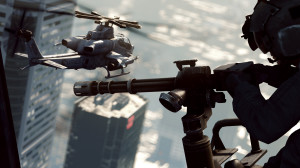 Weapons attachments include various holographic/dot-sights, scopes, lasers, flashlights, barrels, and suppressors – just to name a few! Most notable, however, are the canted iron sights, variable zoom scope, and magnifier. These three attachments allow players to switch between various sight methods and magnifications – instantly switching from closer to longer range combat, which can be a lifesaver. These same customization features carry over to the various vehicles in the game, which include tanks, infantry fighting vehicles, stealth jets, attack helicopters, jeeps/buggies, mobile anti-aircraft, artillery, and even watercraft! Like the guns, most vehicles come with the most essential tools equipped, such as zoom optics for tanks/IFVs and flares for aircraft. By getting points in your craft, you’ll unlock more powerful accessories. Once you’re all set up, don’t forget to slap a camo pattern on your character, guns, and vehicles!
Weapons attachments include various holographic/dot-sights, scopes, lasers, flashlights, barrels, and suppressors – just to name a few! Most notable, however, are the canted iron sights, variable zoom scope, and magnifier. These three attachments allow players to switch between various sight methods and magnifications – instantly switching from closer to longer range combat, which can be a lifesaver. These same customization features carry over to the various vehicles in the game, which include tanks, infantry fighting vehicles, stealth jets, attack helicopters, jeeps/buggies, mobile anti-aircraft, artillery, and even watercraft! Like the guns, most vehicles come with the most essential tools equipped, such as zoom optics for tanks/IFVs and flares for aircraft. By getting points in your craft, you’ll unlock more powerful accessories. Once you’re all set up, don’t forget to slap a camo pattern on your character, guns, and vehicles!
Each class now also has different squad upgrade sets to choose from, which grant additional augments when your squad does well and helps each other. For example, pick the Shadow set for Recon and you’ll be granted various buffs to help you stay hidden from the enemy (such as not being detected by motion sensors) should you help out your squad. These little bonuses can make or a break a firefight, and if your entire squad is dead at once, your progress with them will reset! So be careful, and communicate with your squad for maximum effectiveness.
 As previously stated, BF4 features seven game modes. The most traditional of which is Conquest, where players fight for control of various command points on the map. Each side has a set amount of tickets, which are depleted upon every death on that team, and will decay slowly if the opposing team holds the majority of bases. The objective is to take as many posts as possible, defend them from the enemy, and let their tickets slowly slip away, while killing as many foes as possible to speed up the process. Traditionally, Conquest has been a 12 vs. 12 game time on consoles, but with the expanded power of the Xbox One, massive 32 vs. 32 matches are possible, which can lead to some very fun chaos! Rush is another returning and popular game mode, originally presented in Battlefield: Bad Company. Here, one team defends a static set of objectives, while the opposing side attempts to place explosive charges on them. The attackers have a set number of tickets, similar to Conquest, and each death results in a ticket loss. Every time the attackers take a set of charges, the playing field moves to a different location, the attackers regain their ticket count, and the defenders gain two new charges. To win, the attackers need to destroy every set of objectives, and the defenders need to bring the enemy’s ticket count to zero. These two tried, tested, and true gametypes still stand the test of time, and many gamers will find themselves drawn to them match after match, as these modes never seem to get old.
As previously stated, BF4 features seven game modes. The most traditional of which is Conquest, where players fight for control of various command points on the map. Each side has a set amount of tickets, which are depleted upon every death on that team, and will decay slowly if the opposing team holds the majority of bases. The objective is to take as many posts as possible, defend them from the enemy, and let their tickets slowly slip away, while killing as many foes as possible to speed up the process. Traditionally, Conquest has been a 12 vs. 12 game time on consoles, but with the expanded power of the Xbox One, massive 32 vs. 32 matches are possible, which can lead to some very fun chaos! Rush is another returning and popular game mode, originally presented in Battlefield: Bad Company. Here, one team defends a static set of objectives, while the opposing side attempts to place explosive charges on them. The attackers have a set number of tickets, similar to Conquest, and each death results in a ticket loss. Every time the attackers take a set of charges, the playing field moves to a different location, the attackers regain their ticket count, and the defenders gain two new charges. To win, the attackers need to destroy every set of objectives, and the defenders need to bring the enemy’s ticket count to zero. These two tried, tested, and true gametypes still stand the test of time, and many gamers will find themselves drawn to them match after match, as these modes never seem to get old.
If you’re into the smaller games, you’ll want to try Obliteration, Domination, Team/Squad Deathmatch, and Defuse. Obliteration sees two teams with three objectives, and a neutral bomb. The objective: obtain the bomb, plant it on one of the enemy’s three defences, and defend it until it explodes – then rinse and repeat. The winner of this haphazard mode is the team who destroys all the opponent’s objectives, or has destroyed the most when time runs out. Defuse is a type similar to Call of Duty‘s Search and Destroy mode; players take turns attacking and defending a single objective as with Rush/Obliteration, but with a small twist: you don’t get to respawn until the end of the round! Players must think very carefully in this mode, otherwise their quick deaths will bring the team down.
If pointless violence is more your thing, then Team Deathmatch is where you want to be. Two teams simply fight in a small area to reach a certain amount of kills: no objectives, no special rules, just maim each other! Squad Deathmatch is exactly the same, except instead of two teams, there are four – which can only consist of a squad of up to five players. Tight teamwork is needed to win this gametype, as it’s five against 15, and the first squad to reach the target kill count wins! Overall, the amount of variety for gameplay is substantial, with something for everyone. With ten different maps, from the rolling seas of Parcel Storm to the bustling streets of Siege of Shanghai, players will always have somewhere to go and something to do.
One thing that older Battlefield fans will love to see is the return of Commander Mode, a feature introduced in Battlefield 2 and used again in 2142. Available in Rush, Conquest, and Obliteration, Commander sees one player give up an active slot on the team to take an overhead map view of the battlefield, and bark orders to the various squad leaders. As these orders are followed, the Commander amasses points, which can be used to upgrade squads, scout areas with UAV drones, shorten the respawn time, launch a cruise missile, summon a gunship, and drop vehicles or supplies. Using these features can completely change around the pace of a fight, so it’s worth following a commander’s instructions. What if your commander is not working out and it’s bringing down the team? Squad leaders can vote for a mutiny, kicking him/her the game. Being a fan favourite among gamers, the return of this mode is sure to make many players jump out of their seats in excitement!
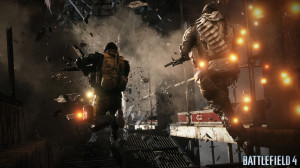 Unfortunately, one of the biggest complaints from new players is how hard it is to learn to fly, snipe, or figure out various other tricks in the heat of battle. Thankfully, the developers at DICE have you covered this time around, as they’ve build a testing ground for players to mess around with. Decked out with a shooting range (including moving targets), land, air, and sea vehicles stations, this level allows the gamer to safely learn all that they need to in solitude before venturing out into the violent fray.
Unfortunately, one of the biggest complaints from new players is how hard it is to learn to fly, snipe, or figure out various other tricks in the heat of battle. Thankfully, the developers at DICE have you covered this time around, as they’ve build a testing ground for players to mess around with. Decked out with a shooting range (including moving targets), land, air, and sea vehicles stations, this level allows the gamer to safely learn all that they need to in solitude before venturing out into the violent fray.
Regardless of which game-mode you play, you’re going to be in pure awe of the Frostbite 3 engine. From aesthetics to gameplay mechanics, Frostbite organically develops some of the most intense and beautiful moments in the shooter genre– playing through BF4 is like living a cinematic experience – especially due to the realism. Most of the game’s walls, set pieces, and objects are completely destructible via bullet or explosions. This can be as small as the piece of cover you’re hiding behind flaking away into nothing with each bullet, or as big as taking down an entire building with C4. This system also allows the map to change based on who is fighting, where, and how – painting a different picture every time.
 Where destruction really shines is in what’s called Levolution – destruction on a massive scale to reshape the battlefield. Each map has its own special Levolution feature, all of which can dynamically change the shape of combat. The most famous is Siege of Shanghai’s central skyscraper, which can be brought crashing down, tossing blinding dust into the air, and turning an indoor vertical match into a complex horizontal one. My personal favorite though would be Lancang Dam’s use of water; players can destroy the dam on the map, completely flooding the first two stories of the battlefield. Since the map is already a very tight, multistory battle, flooding the field creates totally different choke points, and underwater passageways for sneaking. This gameplay mechanic cannot be found anywhere else, and makes for some of the most dynamic warzones you’ll ever fight in – props to DICE for this feature! Not only does the destruction of the game change how you play though, but it looks bloody cool to boot! One of the first things you should do in game, campaign or multiplayer, is find a pane of glass and shoot it. The pane will buckle, fold, break, and fall like real glass would, instead of smashing into weird particle effects.
Where destruction really shines is in what’s called Levolution – destruction on a massive scale to reshape the battlefield. Each map has its own special Levolution feature, all of which can dynamically change the shape of combat. The most famous is Siege of Shanghai’s central skyscraper, which can be brought crashing down, tossing blinding dust into the air, and turning an indoor vertical match into a complex horizontal one. My personal favorite though would be Lancang Dam’s use of water; players can destroy the dam on the map, completely flooding the first two stories of the battlefield. Since the map is already a very tight, multistory battle, flooding the field creates totally different choke points, and underwater passageways for sneaking. This gameplay mechanic cannot be found anywhere else, and makes for some of the most dynamic warzones you’ll ever fight in – props to DICE for this feature! Not only does the destruction of the game change how you play though, but it looks bloody cool to boot! One of the first things you should do in game, campaign or multiplayer, is find a pane of glass and shoot it. The pane will buckle, fold, break, and fall like real glass would, instead of smashing into weird particle effects.
Other small pieces of the engine help make it into a realistic and visually stunning experience. As you run through a corridor, bullets fly past you, smashing into the wall in a crash of sparks – leaving you in awe of the particle effect quality. When your opponent sees you and tries to hit the deck, you’ll be thankful that the game’s realistic animations prevent him from pulling a “drop-shot” on you (where you look down sights and fire as you fall to the ground). Characters move in such a realistic manner that it’s impossible for gamers to pull off the annoyingly cheap shots, something every player will be thankful for. What you’ll be most blown away by is the wave engine, which allows players to see and ride each individual wave at the exact same time and place. On water-based maps like Parcel Storm, where waves end up becoming massive, you’ll realize just how amazing this feature is, as you crash over a 20-foot wave in a attack boat chase!
However, not everything is sunshine and explosions for Frostbite, and the game isn’t without its problems and shortcomings. Once thing any exploring gamer will notice is just how narrow-sighted the engine is. Nearly every object within high traffic areas is breakable, and smashes in extremely realistic ways, but venture just off the beaten path, and you’ll see easily destructible objects be perfectly solid and immune to your attacks. This lack of consistency extends to the previously mentioned glass shatter. When you’re outside of major combat areas, glass either breaks in a cloud of ugly and cheap shard effects, or doesn’t break period! This can greatly impact a player’s immersion into the game, as there’s a huge difference between the realism within battle and being merely a block away from combat.
One other major problem presents itself with BF4, and I’m sure you saw this one coming: netcode. As with just about every other Battlefield launch, BF4 suffers from a series of netcode bugs, ranging from general connectivity and server-kicking to full game crashes during multiplayer sessions. You’ll randomly be playing a round online (probably winning too, if your luck is terrible), and you’ll suddenly be kicked from the server, unable to rejoin. Or worse yet, your game may completely shut down, sending you back to the Xbox One home menu. In a game based mainly around multiplayer, nothing can be worse than multiplayer not working properly. While the series has a track record of launch window server errors, the consistency of it makes it more and more infuriating with each release.
One thing you will always have to give the Battlefield games, and BF4 is no exception, is their attention to detail in audio. From the crack of weapon fire, the crunching of glass underfoot, the bass of a large explosion, or the creaking steel of a falling building, every audio effect sounds so realistic that you’ll swear you were actually there. Voice acting in-game is also very well done, with many of the voices in campaign and multiplayer sounding like real soldiers in real combat (and the above-mentioned orders being in your team’s native language is a huge plus). If you can swing it, I recommend playing with headphones or surround sound speakers to truly get the best experience you can.
All in all, Battlefield 4 is an amazing shooter experience. With a crazy engine featuring brilliant (though short-sighted) destructibility, a wealth of game-modes and maps, deep customization, and realistic audio, this is one game you need to play to believe – and even then you may have troubles. Unfortunately, a few server and netcode issues will prevent you from playing at times, and a lackluster campaign will fail to keep your attention, but on the whole this is one of the best and most engaging shooters ever made. If it isn’t already in your next-gen game roster, you need to add it ASAP. You won’t regret it, soldier!
About This Post

